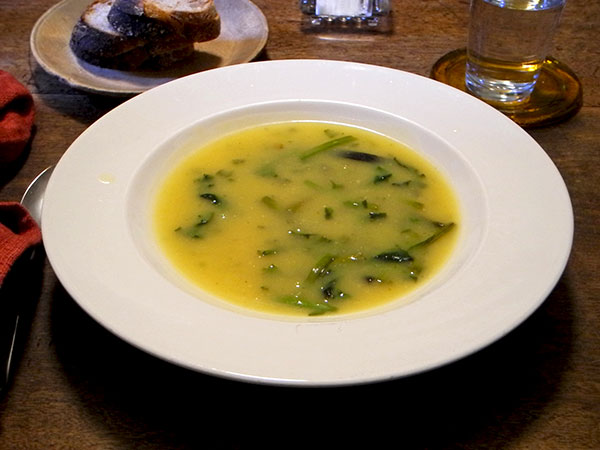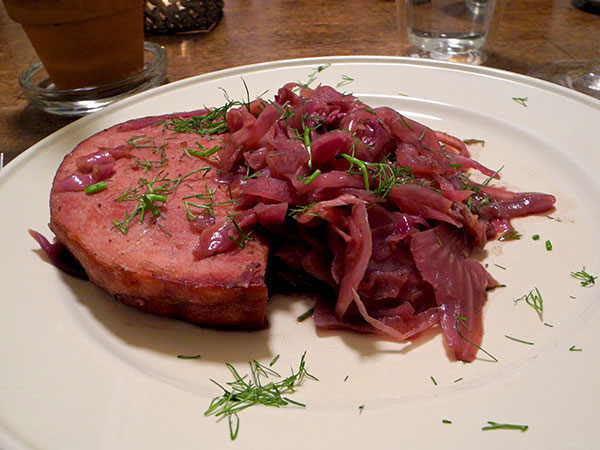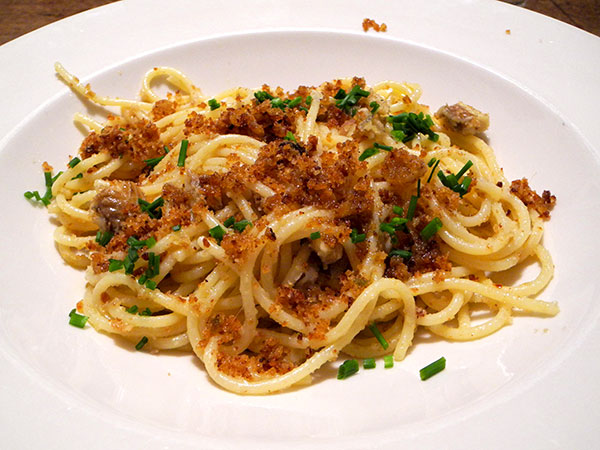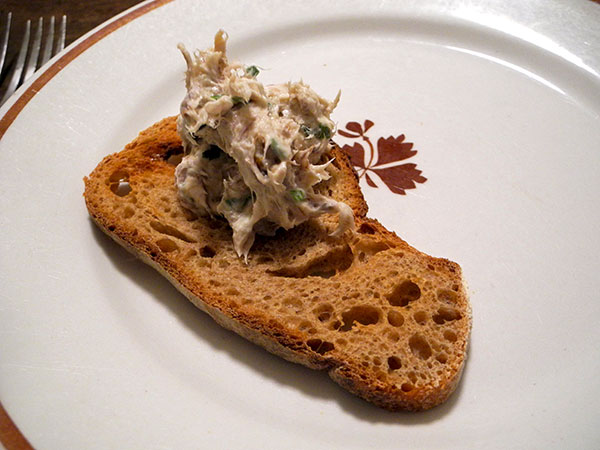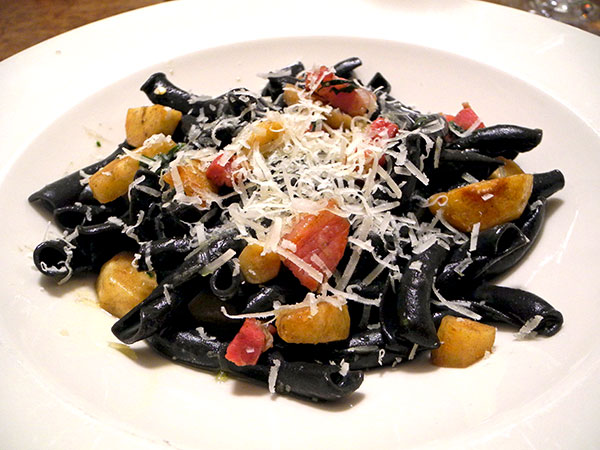Rarely do I post about lunch, mostly because we don’t usually make much of a deal about midday meals at home, but when I assemble something out of leftovers and other things I might have on hand – especially if there may be some lesson in it, for me at least – I’m tempted to share it. For it to happen, of course, the picture also has to be presentable.
I started out only wanting to put together a quick meal for the two of us, but the soup which resulted was even more delicious than it deserved to be under the circumstances.
I know that I’m supposed to cook everything from scratch, and as much as possible with local ingredients, but this was just lunch. Never underestimate the usefulness, or goodness, of Knorr leek mix. I’ve had a soft spot for the company, founded in 1838 to make a coffee substitute, since I was living in Hanover in 1961. I think part of my fascination with the rudimentary German supermarkets at the time might have been the discovery that there was such a thing as Ersatzkaffee, but I’m not certain it was Carl Heinrich Theodor‘s product I knew then. Today the Knorr brand is owned by Unilever. I go for long stretches not thinking about it, but then I’ll spot the tidy icon in a store, and I melt just a bit. I don’t know what I had in mind when I bought the firm’s leek mix packets perhaps a couple years ago, but the last one came in very handy today. The fact that the dry mix tasted as good as it always does/did probably helps explain it’s usefulness – and popularity.
- a package of Knorr ‘Leek recipe mix’ I had found in the larder, simmered for five minutes and with two and a half cups of chicken broth made with Better Than Bullion chicken base (another kitchen savior, as are the company’s beef and vegetable versions), after which I added some wilted Golden Beet greens which I had left over from a dinner I made three days before
- slices of a crusty loaf of Trucio from Sullivan Street Bakery
- the beverage was a cold pitcher of still New York tap water
